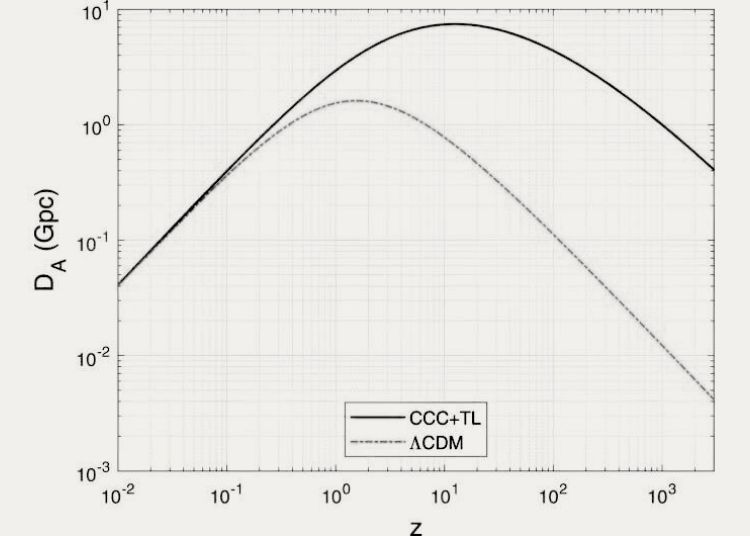A new study challenges the existence of dark matter, proposing a new cosmological model (CCC+TL) that explains galactic behavior without invisible matter and offers a different explanation for cosmic expansion.
The prevailing theory of our universe suggests it’s a cosmic cocktail of three ingredients: normal matter, dark energy, and dark matter. Dark matter, invisible and mysterious, makes up a whopping 27% of the universe’s composition according to this model. However, a new study throws a wrench into this well-established theory.
Rethinking the Universe: A Model Without Dark Matter
A recent study published in The Astrophysical Journal by Rajendra Gupta, a physics professor at the University of Ottawa, challenges the very existence of dark matter. The study proposes a new cosmological model (CCC+TL) that does not require dark matter to explain the universe’s behavior.
- Deconstructing Dark Matter: In standard cosmology, dark matter is a hypothetical substance that exerts gravitational pull but doesn’t interact with light or the electromagnetic field. This invisible matter is believed to be crucial for explaining the rotation rates of galaxies and the large-scale structure of the cosmos.
- A New Recipe for the Universe: The CCC+TL model incorporates two key ideas:
- Covarying Coupling Constants (CCC): This theory suggests that the fundamental forces of nature (gravity, electromagnetism, etc.) weaken as the universe expands.
- Tired Light (TL): This concept proposes that light loses energy as it travels vast cosmic distances, causing its wavelength to stretch (redshift).
The CCC+TL model has been tested and found to align with various cosmological observations, including the distribution of galaxies and the evolution of light from the early universe.

Challenging the Status Quo: Rethinking Cosmic Expansion and Dark Energy
This new study throws a curveball at the standard cosmological model in two ways:
- Dark Matter Not Required: The CCC+TL model suggests that the observed gravitational effects previously attributed to dark matter can be explained by the weakening forces of nature within the expanding universe. In this scenario, dark matter becomes unnecessary.
- Redefining Cosmic Expansion: The standard model attributes the universe’s accelerating expansion to dark energy, a mysterious force pushing galaxies apart. The CCC+TL model proposes that the weakening of gravity itself is responsible for this accelerated expansion, eliminating the need for dark energy.
Gupta acknowledges that other studies have questioned the existence of dark matter, but he believes his approach is unique. By proposing a new model that aligns with established observations and eliminates the need for dark matter, Gupta’s study opens exciting new avenues for cosmological exploration.
This research has the potential to shake the foundations of our understanding of the universe. Further investigation and verification are needed, but the prospect of a dark matter-free universe is sure to ignite debate and inspire new scientific exploration.



















